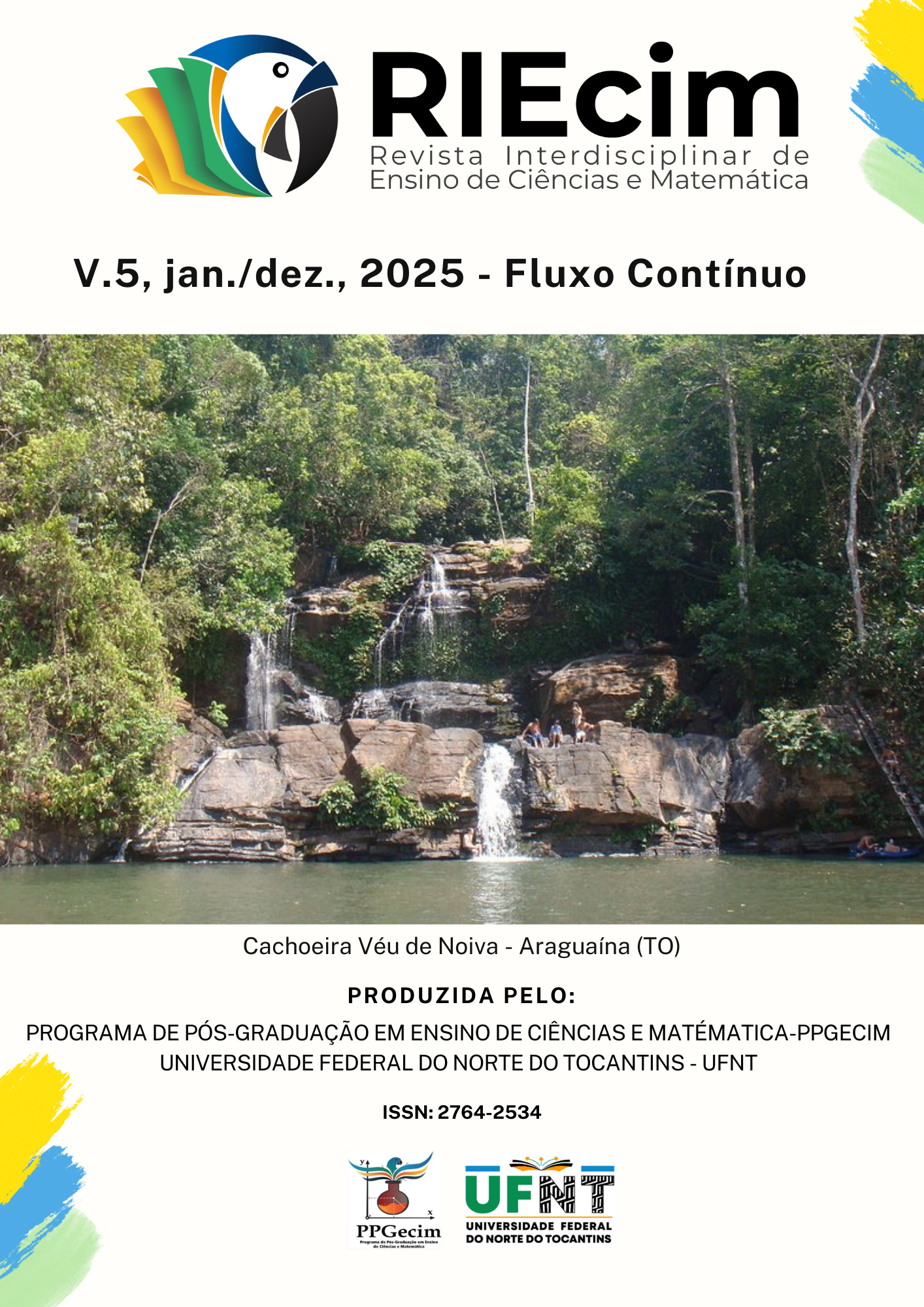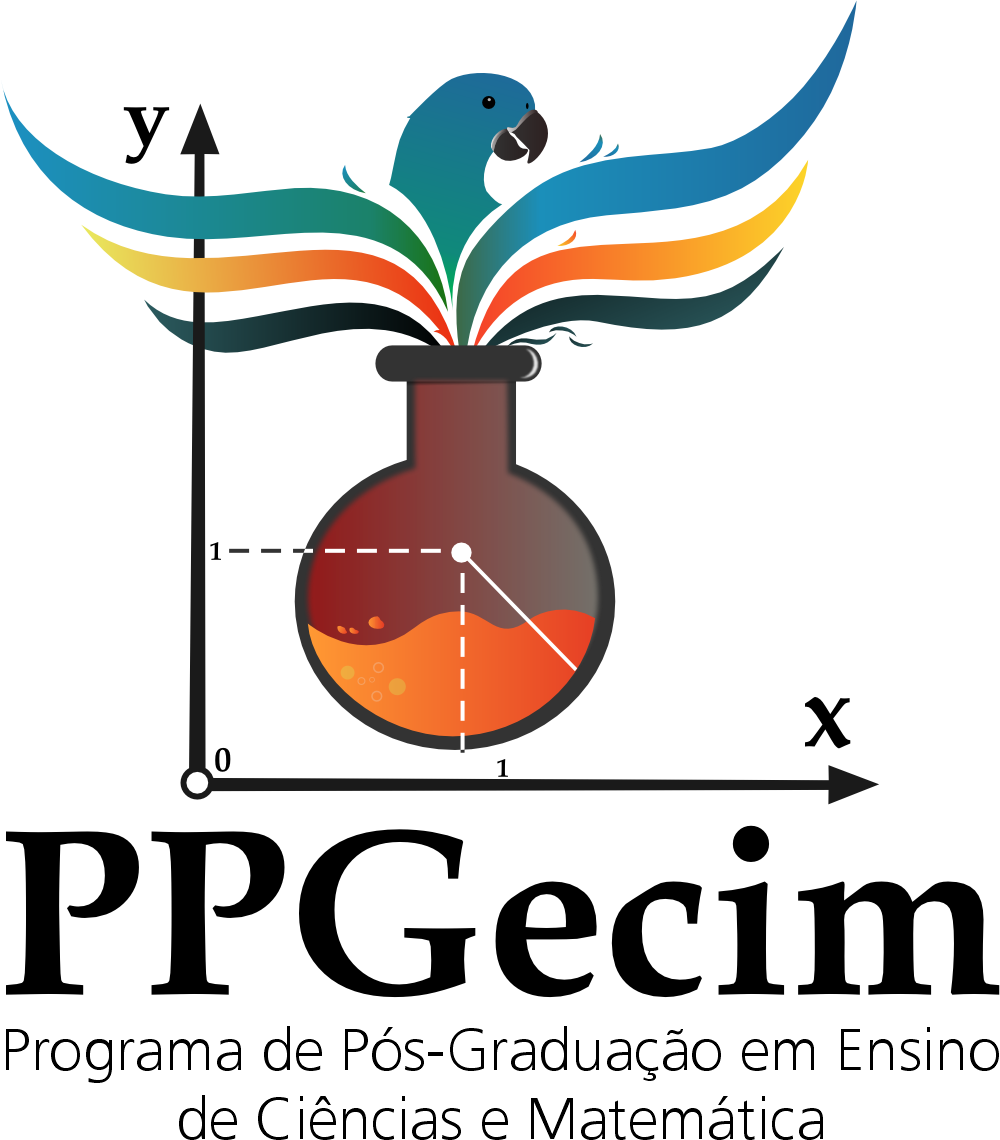SEASONS OF THE YEAR THROUGH AN INCLUSIVE DIDACTIC SEQUENCE: POTENTIALITIES OF A TACTILE-VISUAL MODEL
DOI:
https://doi.org/10.20873/riecim.v3i1.16755Keywords:
Astronomy, Model, Didactic SequenceAbstract
In this article, I present a proposal for a didactic sequence – SD associated with the use of tactile-visual models on the theme “Seasons of the Year”, based on Universal Learning Design – DUA. For this purpose, a theoretical rescue was carried out regarding the central themes that guide the elaboration of a SD, to meet the educational needs of students with and without visual impairment. As it is a theoretical study, the overall objective was to suggest a sequence of activities that enhance the dialogical relationship between the content “seasons of the year” and the tactile-visual perception of students in the classroom. The results of this research turned into a report of a very important experience, whereby it is understood that for the didactic sequence to be able to promote a meaningful dialogue with the concepts involved, it is necessary that its format, in addition to being supported by the UDL, take into account the assertive use of the chosen materials and their meanings, in the elaboration of the didactic resources.
References
ALVES, M. M.; RIBEIRO, R.; SIMÕES, F. Universal Design for Learning (UDL): contributos para uma escola para todos. Tecnologia da Informação em Educação, Indagatio Didáctica - Universidade de Aveiro, v. 5, n. 4, p. 121-146, 2013. https://doi.org/10.34624/id.v5i4.4290
ANDRADE, D. P. E IACHEL, G. Elaboração de recursos didáticos para o ensino de Astronomia para Deficientes visuais. In: Atas do XI Encontros Nacionais de Pesquisa em Ensino de Ciências – ENPEC, Florianópolis, Abrapec, 2017.
AZEVEDO, M. C. P. S. D.; PIETROCOLA, M. Estudando a transposição interna a partir da teoria das situações de Brousseau. In: XI Encontro de Pesquisa em Ensino de Física. Curitiba, PR. 2008. Disponível em:
BRASIL, Lei n. 13.146, de 6 de jul. de 2015. Lei Brasileira de Inclusão da Pessoa com Deficiência. Disponível em: http://www.planalto.gov.br/ccivil_03/_Ato2015-2018/2015/Lei/L13146. Acesso em: 14 jun 2023.
CAMARGO, E. P. Inclusão e necessidade especial: compreendendo identidade e diferença por meio do ensino de física e da deficiência visual. São Paulo – Bauru. Editorial • Ciênc. educ. (Bauru) 23 (1) • Jan-Mar 2017
CAMARGO, EP. Saberes docentes para a inclusão do aluno com deficiência visual em aulas de física [online]. São Paulo: Editora UNESP, 2012. 274 p.
CERQUEIRA, J. B.; FERREIRA, E. M. B. Recursos Didáticos na Educação Especial. Revista Benjamin Constant, Rio de Janeiro, nº5., p.15-20, 1996. Disponível em: file:///C:/Users/realn/Downloads/602-Texto%20original-1456-1-10-20170331.pdf
CRUZ, E. C. Princípios e critérios para o planejamento das atividades didáticas. In: Castro, A. D. E. A. (Ed.). Didática para a escola de 1º e 2º graus. 4. São Paulo: Pioneira, 1976. p.49-55.
DOLZ, J. Sequências Didáticas para o oral e a escrita: apresentação de um procedimento. In: (Ed.). Gêneros orais e escritos na escola. Coleção as faces da linguística aplicada. Campinas, SP: Mercado das Letras, p.95-128, 2004.
FARIA, et al. Ensino de química para deficientes visuais numa perspectiva inclusiva: estudo sobre o ensino da distribuição eletrônica e identificação dos elementos químicos. In: XI Encontro Nacional de Pesquisa em Educação em Ciências – XI ENPEC Universidade Federal de Santa Catarina, Florianópolis, SC, 2017. Disponível em: https://www.abrapec.com/enpec/xi-enpec/anais/listaresumos.htm. Acesso em 15 de jun de 2023.
GALIETA, T.; SOUZA SANTOS, K. EDUCAÇÃO INCLUSIVA E ENSINO DE CIÊNCIAS: Formação e práticas de professoras em atuação na educação básica. Revista Interdisciplinar em Ensino de Ciências e Matemática, [S. l.], v. 2, n. 1, p. 26–43, 2023. DOI: 10.20873/riecim.v2i1.13881. Disponível em: https://sistemas.uft.edu.br/periodicos/index.php/RIEcim/article/view/13881. Acesso em: 11 jul. 2023
GIL, M. (Org.). Deficiência visual. Brasília: MEC/Secretaria de Educação a Distância.
http://www.sbf1.sbfisica.org.br/eventos/epef/xi/sys/resumos/T0058-1.pdf. Acesso em 10 de jun de 2023.
LAKATOS, E. M.; MARCONI, M. A. (2003). Fundamentos de Metodologia Científica. São Paulo, SP: Atlas, 2000.
MACHADO, A. R. Uma experiência de assessoria docente e de elaboração de material didático para o ensino de produção de textos na universidade. DELTA: Documentação de Estudos em Linguística Teórica e Aplicada, p. 1-26, 2000. https://doi.org/10.1590/S0102-44502000000100001
MATOS, L. A. D. Sumário de Didática Geral. 10. Rio de Janeiro: Gráfica Editora Aurora, 1971.
NASCIMENTO, L. M. M.; GUIMARAES, M. D. M.; EL-HANI, C. N. Construção e avaliação de sequências didáticas para o ensino de biologia: uma revisão crítica da literatura. In: VII Encontro Nacional de Pesquisa em Educação em Ciências. Florianópolis, SC, 2009. Disponível em: http://fep.if.usp.br/~profis/arquivos/viienpec/VII%20ENPEC%20-%202009/www.foco.fae.ufmg.br/cd/pdfs/1002.pdf . Acesso em: 12 de jun de 2023.
p. 1–9. Disponível em: http://www.abrapecnet.org.br/enpec/xi-enpec/anais/resumos/R0291-1.pdf. Acesso em: 06 jun. 2023.
RODRIGUES, F. M. O céu como Tema Gerador para a Educação Inclusiva: desafios e possibilidades a partir da cosmopercepção de estudantes com deficiência visual. Tese (Doutorado não publicada no momento) – Universidade Estadual Paulista “Júlio Mesquita Filho”, Bauru – SP, 2020.
RODRIGUES-MOURA, S. O ENSINAR E O APRENDER FÍSICA EM TEMPOS REMOTOS:: UM (RE)OLHAR SOBRE A EXPERIÊNCIA FORMATIVA . Revista Interdisciplinar em Ensino de Ciências e Matemática, [S. l.], v. 1, n. 1, p. 91–102, 2021. DOI: 10.20873/riecim.v1i1.11798. Disponível em: https://sistemas.uft.edu.br/periodicos/index.php/RIEcim/article/view/11798. Acesso em: 11 jul. 2023.
SEBASTIÁN-HEREDERO, E. Diretrizes para o Desenho Universal para a Aprendizagem (DUA). Revista Brasileira de Educação Especial, 2020. 26 (4): p.733-768. Disponível em: https://www.scielo.br/j/rbee/a/F5g6rWB3wTZwyBN4LpLgv5C/?lang=pt. Acesso em 17 de jun de 2023
ZABALA, A. Prática Educativa: como ensinar. Porto Alegre: Artmed, 1998.
ZERBATO, A. P. O desenho universal para a aprendizagem na formação de professores: da investigação às práticas inclusivas. Educação e Pesquisa, 2021. 47: p. 1-19. Disponível em: URL:https://www.scielo.br/j/ep/a/XrThMT5Hhn6D9CSqcn3HHSM/abstract/?lang=pt. Acesso em 17 de jun de 2023
Downloads
Published
How to Cite
Issue
Section
License
Copyright (c) 2023 Fabio Matos Rodrigues

This work is licensed under a Creative Commons Attribution-NonCommercial 4.0 International License.
Copyright Policy
Copyrights are retained by the authors, who grant RIEcim the exclusive rights for first publication. Authors will not be remunerated for the publication of their work in this journal. Authors are permitted to enter into separate, additional contractual arrangements for the non-exclusive distribution of the work's published version in this journal (e.g., post it to an institutional repository, on a personal website, publish a translation, or as a book chapter), with acknowledgement of authorship and initial publication in this journal. The Journal's editors have the right to make textual adjustments and adaptations to conform to publication standards.
Open Access Policy
This journal provides immediate open access to its content, following the principle that freely providing scientific knowledge to the public contributes to the global democratization of knowledge. Users can read, download, copy, distribute, print, search, or use the content for any legal purpose, respecting national copyright laws and without seeking prior permission from the publisher or the author. The opinions presented in the articles are the responsibility of the authors. The Journal does not charge Article Processing Charges (APCs).
Licensing Policy - Usage License
Licensed under the Creative Commons Attribution-NonCommercial 4.0 International (CC BY-NC 4.0) License. This license allows sharing, copying, redistributing the manuscripts published in RIEcim in any medium or format. Additionally, it allows adapting, remixing, transforming, and building upon the material, as long as proper credit is given to the author and initial publication in this journal is acknowledged.

































